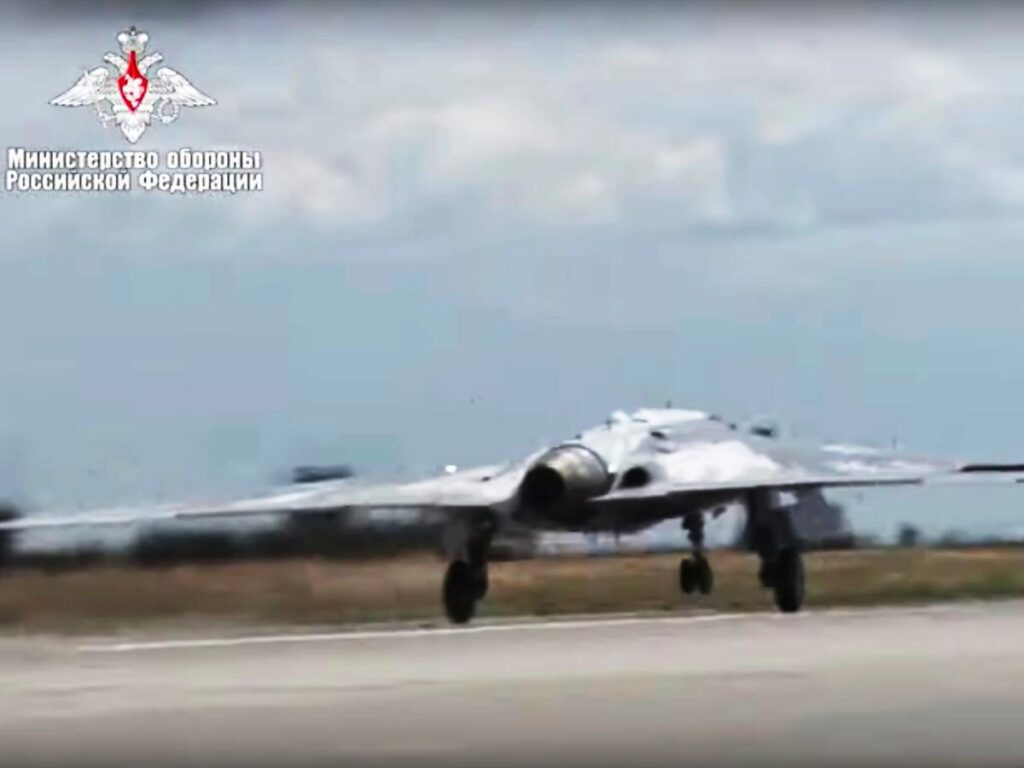The recent loss of a Russian S-70 Okhotnik (Hunter) drone over the weekend in eastern Ukraine has significant implications for both Moscow and Western intelligence. The cause of the crash remains unclear, but it has been widely speculated to be a potential accident involving friendly fire or a deliberate downing by the drone’s operators to prevent Ukraine from gaining access to advanced technology. Footage of the drone—a new heavy combat model—plummeting and leaving a trail of smoke circulated on social media. This event marks a troubling moment for Russia, which has not produced many of these advanced drones yet, as they are crucial to its military capabilities in the ongoing conflict.
The wreckage was discovered in Kostyantynivka, a location a few miles behind the front lines, raising questions regarding the mission of the drone at the time of its crash. Previously, the S-70 drones had made their combat debut in the Ukraine conflict, and any loss would not only impact Russia’s operational capacity but also provide an intelligence bonanza for Western countries. Ukrainian service members were quick to inspect the wreckage, which could offer critical insights into the drone’s design and technology—a major concern for Russian military forces.
Conflict analysts suggest this incident is a substantial intelligence victory for NATO and the West. Samuel Bendett, an expert on drone technology, emphasized that the S-70 represents the pinnacle of Russian drone development after a decade of effort. The potential to access the wreck could shed light on its technological advancements, weaknesses, and components, especially given that there are likely few prototypes remaining. Bendett noted that such access would empower NATO to devise strategies to counter similar Russian drone capabilities in the future, enhancing their positional advantage in aerial warfare.
Speculation surrounding the cause of the crash includes theories of a friendly-fire incident involving one of Russia’s advanced Su-57 fighter jets, which may have unintentionally shot down the drone. Other reports indicate that the drone operators may have lost control and purposefully brought it down to thwart potential exploitation by Ukraine. Despite the lack of official statements from either Russia or Ukraine, the incident underscores the unpredictability and risks involved in modern warfare, where technology plays a critical role in strategic advantages.
The S-70 Okhotnik has been designed since the early 2010s, drawing comparisons to the American RQ-170 Sentinel drone. Each S-70 weighs around 20 tons and has a wingspan of approximately 65 feet, but only a couple of units are believed to have been produced. While both Ukraine and Russia have employed various drones to enhance their combat capabilities, they have predominantly relied on cheaper, mass-produced models. The capabilities of these heavier, expensive systems, such as the S-70, come into question when light drones can achieve similar objectives for lesser costs.
This situation leaves Russia in a strategic dilemma concerning drone development. As the few S-70s in service become highly vulnerable in conflict settings, the military must decide whether to invest further in such expensive projects or divert resources to more economical long-range attack drones. The implications of this incident and the potential insights gained by Ukraine could also influence future developments within the context of the ongoing conflict, shaping the course of future aerial engagements and the evolution of drone warfare tactics. The unfolding analysis of the wreckage will likely provide valuable information to both Russian and Ukrainian military strategists.

